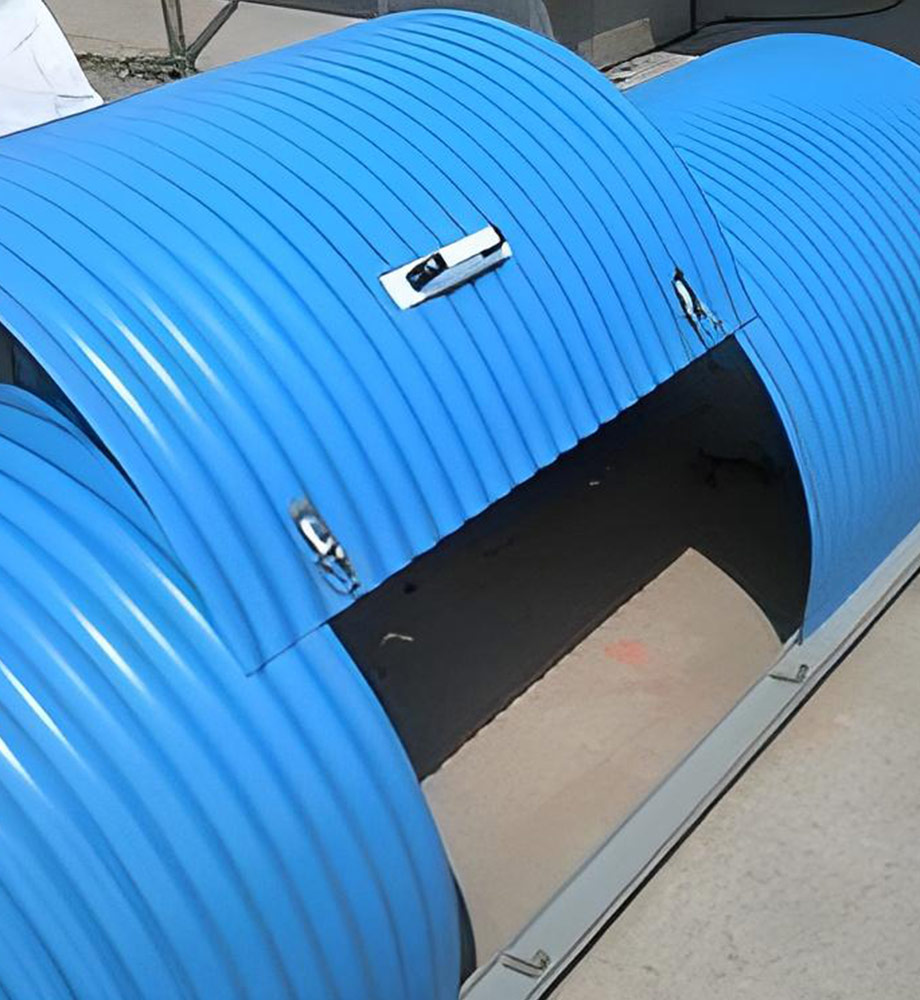Key Features
- Chemical-Resistant Construction: Made of FRP or PVC/FRP, the hood resists corrosive process emissions and acids.
- Lightweight and Rigid: The composite structure keeps the cover stiff and light, enabling large covers (several meters) without heavy supports.
- Custom Shapes: Can be molded or formed into sloped hoods, square/round chimneys caps, and filter box covers per spec.
- Easy Installation: Bolt-on design with FRP flanges or hinges; gaskets prevent leaks. Fiberglass rivets or hardware are used for total FRP assembly.
- UV and Heat Stability: Outdoor hoods maintain their strength and color over years of sun and rain exposure.
Benefits
- Corrosion Immunity: Unlike stainless or painted steel hoods, FRP hoods will never corrode when exposed to acids, salts or chemicals. This ensures long life in laundry vents, swimming pool HVAC, plating bath vents, etc.
- Low Maintenance: No painting or recoating needed. Smooth FRP surfaces resist dirt and can be easily washed down.
- Cost Savings: Reduced downtime for repair or replacement of vent hoods. Even complex shapes can be made as one piece, cutting labor and field assembly time.
- Safety: Nonconductive FRP reduces risk of spark in flammable exhaust streams. Fire-retardant options are available.
Applications
FRP hoods and covers are used for exhaust vents, fume hoods, dust collection in corrosive environments. Examples include chimney caps on FRP stacks, transition covers on chemical scrubbers, plastic vent covers in food processing, and skylight or duct covers in humid saltwater plants. They also serve as blower inlet/outlet guards, filter housings, and gear covers in many industrial air systems.
Technical Specifications
FRP hoods are engineered to the specific process. Material selection (vinyl ester, epoxy, etc.) matches the chemicals. Thicker laminates are used on large covers to resist wind or weight (like snow load). Hoods can be fitted with FRP collar/flange for duct connection.
Unique Selling Points
The USP of FRP hoods is tailored corrosion resistance. For instance, a custom FRP hood can seal tightly around an open tank, channeling fumes to a scrubber with no leaks. Compared to off-the-shelf metal hoods (which will fail in a few years), FRP hoods have negligible lifecycle cost. Additional USPs include integration with FRP ducting (seamless fit) and the ability to withstand internal chemical spills without damage.

